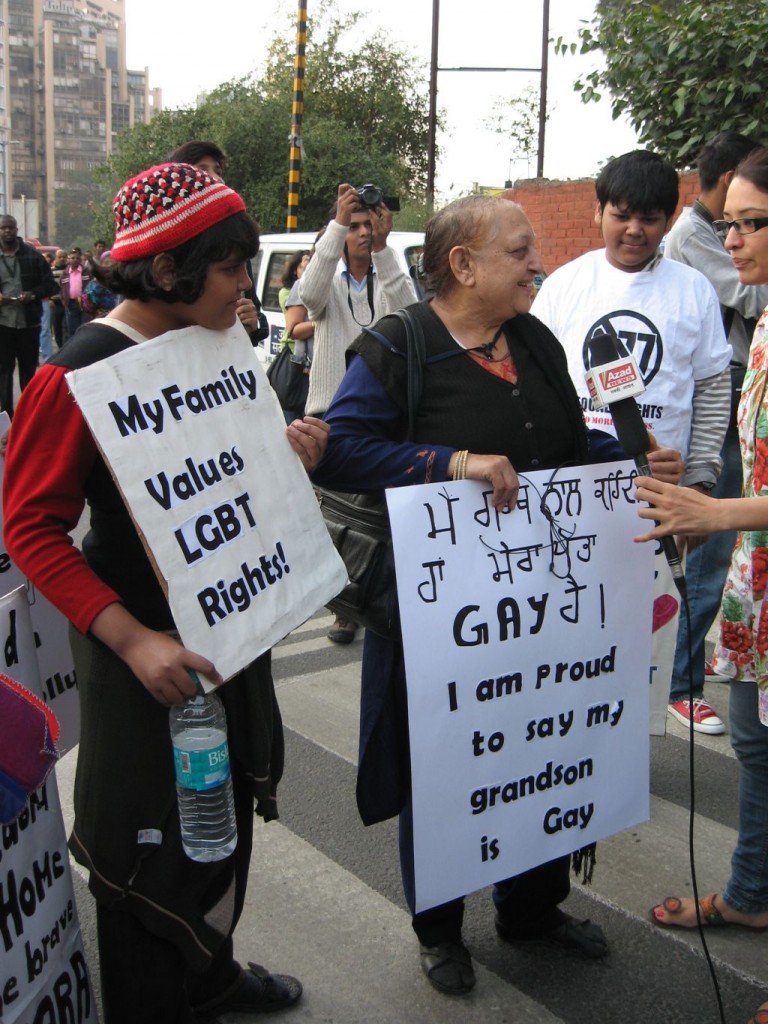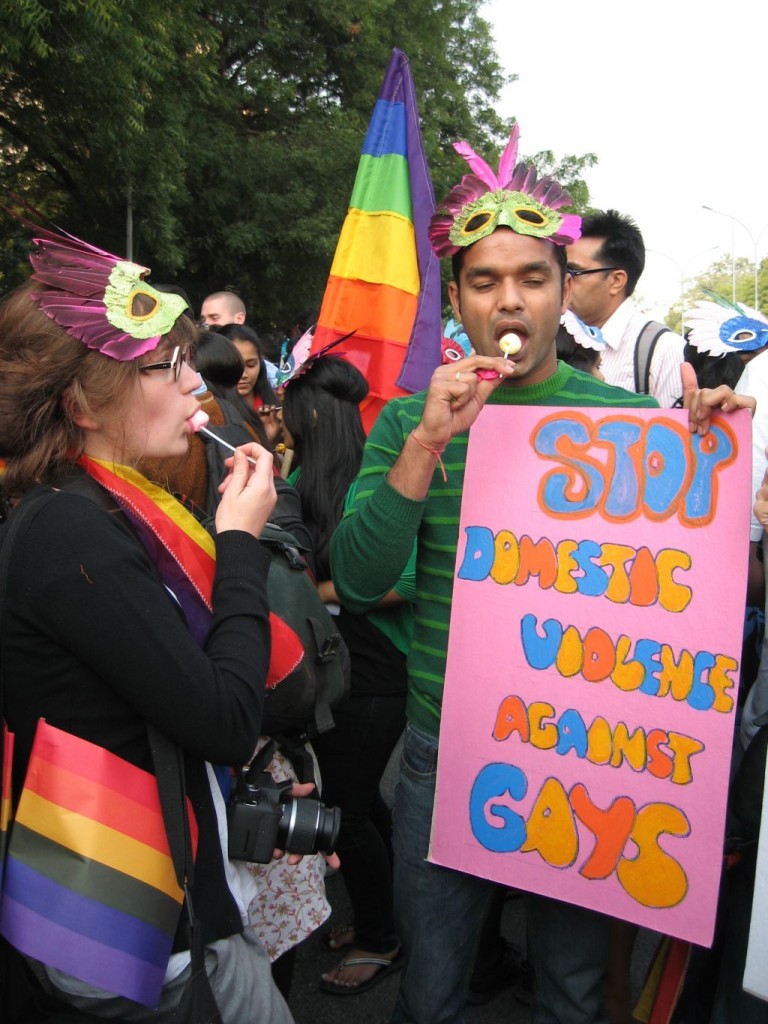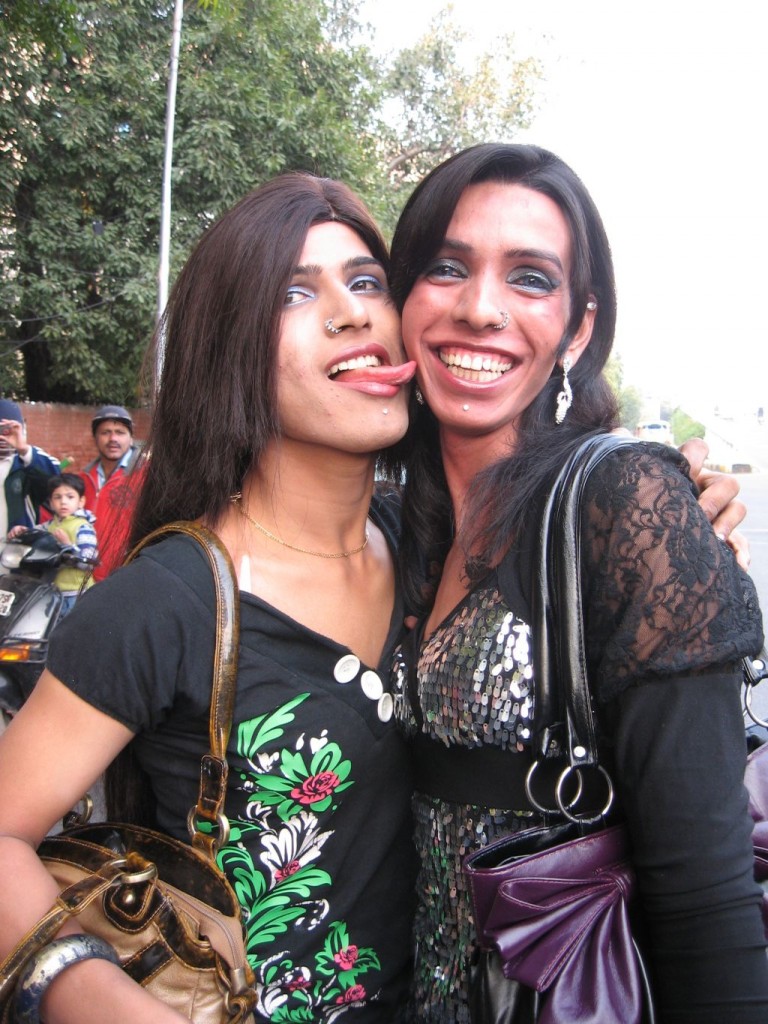Delhi Pride
Delhi celebrated its Gay Pride Parade this year on the 28th of November, and I was excited to attend it again. Until last year, the parade used to be held in June, but this year the date was shifted because Delhi gets unbearably hot during the summer. Honestly, I think it was a very sensible decision. This year’s parade was especially important to me because it was the first big pride event in Delhi after the decriminalization of Section 377. I really wanted to witness how people would react. I went with my friend Babu, and later my friend Ravikant, who happened to be in Delhi for some personal work, also joined us.
Participants
I have already attended several pride parades in India, so nothing really surprised me anymore, but Babu and Ravi were completely shocked. They had no idea what to expect. The parade started at Barakhambha Road and ended at Jantar Mantar, which was about two hours of walking. When I reached Barakhambha, there were already a few hundred people gathered. Many were getting dressed up, others were distributing masks, pamphlets, and candies. One thing I have always noticed about Delhi Pride is that it has a good number of Hijra participants.
Demands
The parade was much bigger than last year and far more diverse. There were families, Hijras, students, members of the LGBT community, and straight allies. The event began with music, dancing, and slogans, and soon hundreds more joined in. The police were present in large numbers to manage traffic and ensure safety. The parade lasted nearly three hours and felt like a mix of modernity and tradition. Some people wore traditional attire, while others were dressed in a very modern way. What really stood out was the overwhelming support from students and young people, which gave the whole event a very energetic and hopeful vibe.
Love
When we reached Jantar Mantar, there were speeches by social workers, organizers, and participants. A large organization called NAPM also joined this year and openly declared their support for the LGBT community. Since NAPM works on several important issues across India, their involvement could really bring meaningful change in society. This was personally encouraging for me because I have been planning to organize a pride parade in Varanasi, and NAPM’s support would make a huge difference. I already know one of their state conveners in Uttar Pradesh, Nandlal Master, and it was inspiring to see the organization get involved.
Support
Many of the speeches focused on discrimination faced by the LGBT community. Some participants even came on stage wearing masks, but once they felt the support of the crowd, they removed their masks and proudly revealed their identities. They said the parade gave them confidence to no longer hide their sexuality. It was a very emotional and powerful moment. The event concluded with a candlelight gathering, which gave the whole day a beautiful ending. Afterwards, people were talking about post-pride parties happening across the city. Because the number of participants was larger this year, several different parties were organized at multiple locations, some paid and some free.
Definitely
I asked around and got a few different addresses, which clearly showed how big the event had become. I went home, got ready, and later headed to a club near Qutub Minar for one of the parties. However, only those who had received an official SMS invitation were being allowed entry. I explained to the security guard that I had come from Varanasi and had already been in touch with the organizers, but they still refused. Eventually, I met one of the organizers outside the club who arranged for me to be taken inside. The rooftop party was lively, with music, drinks, and food, though extremely expensive. A small beer that usually costs Rs. 50 in the market was being sold for Rs. 600, and even the cheapest whiskey shots cost the same. Still, we managed to enjoy ourselves. My friends, especially Ravikant, were shocked but also fascinated by the whole experience.
Participants
Suddenly, the police showed up and ordered the DJ to stop the music. In India, loud music at public places is not allowed after 10 PM, and the police were not ready to compromise. The organizers tried to negotiate, but nothing worked. The party was shut down and we were asked to leave immediately.I was a bit disappointed because post-pride parties are usually very different from regular parties and I enjoy them a lot, but this time I could not. Still, I have no regrets. I was happy that I got to attend the parade, experience the energy, and learn from it. It was a meaningful and memorable day.
I hope to attend Delhi Pride again next year.







